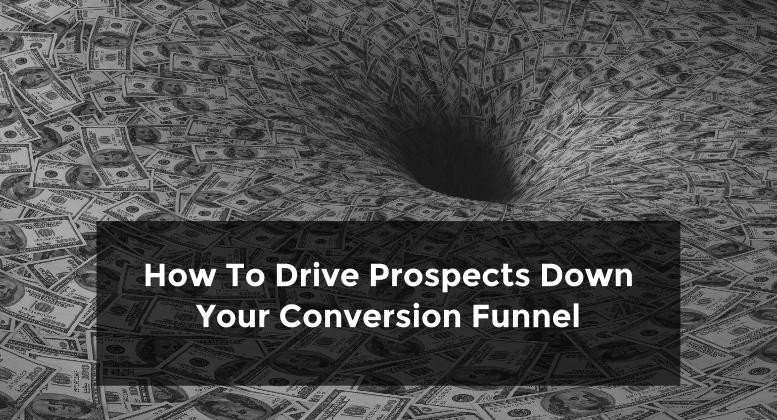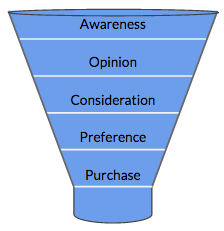
You are probably familiar with lead acquisition. It’s talked about a lot on the Wishpond blog and all over the marketing blogosphere.
But what do you do with your leads once you’ve acquired them?
If you answered “Close ‘em!” I like where your head is at, but unfortunately, the process isn’t always so simple.
In the next few minutes, I’m going to introduce you to practical strategies for nurturing your leads down the conversion funnel. It’s not difficult, but you need to be intentional.
To start, let’s look at how your customers are changing the game from how it used to be played.
A New Era For Lead Nurturing
Companies used to rely on the sales staff to nurture leads down the funnel until they became ready to place an actual order. The digital age has changed this though, so that now, the pre-sale relationship building process is often either directly automated or systematically advanced via inbound marketing efforts.
Prospective customers do their research on the web long before they are actually ready to buy, so companies come into contact with potential buyers much earlier in the purchase process – often while they’re still learning the ins and outs of their pain points and the various solution approaches available on the open market.
These “top of the funnel” (ToFu) leads prefer to explore your informational resources on their own and are not ready to engage with sales reps until the very end of their decision making process.

These audience members choose to come to you for help finding the solutions that best fit their needs, which is why today’s marketing is so often referred to as “inbound.” In order to enable prospects to efficiently progress through the conversion funnel, your inbound marketing process must nurture them with timely and relevant content messaging which will build trust and authority and keep them interested in your solution and brand.
With shrewd automation in place, the elements of successful inbound marketing can nurture your leads until your tracking tools inform you they are ready to be closed. At that point, it’s time to engage them with your sales team or hit them with direct-response marketing.
Accounting for Variables
Setting up and maintaining this automated inbound lead nurturing system can be a complex task. It requires a number of things:
- Constant monitoring and engagement via audience acquisition channels like social media, search and pay-per-click advertising.
- Keeping an eye on the latest demands of your ideal customers, the latest tools of the trade and the latest trends in content consumption.
- Mapping out a complex web of touchpoints where prospects will encounter your brand and envisioning the flow of activity that is most likely to help them along their decision-making journey.
- Personalization. In an email case study, Vemma Europe was able to generate a 73% open rate through the use of dynamic email scripts that simply fed customer-supplied information back to the customer.
Accounting for these variables requires a dedicated effort. You might want to invest in a revolving door of lead-oriented landing pages, with varying messages optimized to appeal to targeted sub-segments of your audience.
Utilizing A/B testing will help you determine which content layouts, engagement styles and call-to-action (CTA) designs are most effective with your audience.
As you collect and adjust this wealth of data, auto-triggered emails can be set up to target any number of user actions that suggest specific interests or intent.
Transitioning from “Marketing” To Metrics
The key here is intentional data collection.
Lead nurturing is not to be managed haphazardly. It should be well thought-out and planned.
The first step is to list objectives. These are likely to include goals such as building brand awareness, driving traffic to your website and gaining trust by generously sharing your expert wisdom.
Next, consider who your customer is and create a few buyer personas that describe them, paying specific attention to each one’s problems, needs and content consumption preferences. Each buyer persona has a different set of specific issues to sort out at each stage of the funnel.
What resources can you provide that will help each segment recognize a need, see you as the solution and finally, make the purchase?
At each one of these stages, different content formats, tones and messages become necessary. By methodically mapping out the entire process, you can avoid turning audience members off by serving them the wrong content at the wrong moment.
Making It Simple
It can be tempting to come up with a dizzying number of scenarios and set up automated workflows for each one. However, this approach is likely to backfire on you when you try to make changes and lose track of the tangled web you’ve set up.
Instead, set up a small number of landing pages and create a workflow for each one – a flow that begins when a lead opts in to your offer. Your emails should be personalized and sent out a few days apart so you keep your brand name in front of the lead as he considers his options.
Every product and every company is different, but here’s a typical scenario:
Say your landing page offers a free white paper download. Your first automated email could be a “thank you for downloading” message, along with a secondary offer. A few days later, your second email could be a reminder about that offer and some additional material, such as a link to an informative article.
With each successive email, send more educational material such as videos, e-books and interesting product news. Deepen the relationship with your leads so they see your company as trustworthy and an authoritative expert in your niche.
Once it’s all up and running, don’t forget to track results and use A/B testing to figure out what types of messages work best. Optimize and tweak lead nurturing flows until you have a system that works well. But remember that this aspect of the work is never complete – keep measuring and experimenting.
Ready to Close the Sale
With the automated nurturing matrix in place, you can now determine what set of conditions reveal that a lead is sales-ready. You might use a combination of visits to the websites, visits to high-value pages (such as pricing), the sudden appearance of multiple team members from one company visiting your site, or an upward trend in recipient-specific clicks on email offers.
You can assign a point value to each type of behavior, as well as to segmentation factors, and grade each prospect accordingly. When the prospect reaches a certain score, marketing’s lead nurturing has completed its job, and your prospect is ready to be closed!
Related Content
- 5 Proven Ways to Drive Traffic to Your Website & Improve Your Reach
- 6 Ways To Grow Your Business Through Inbound Marketing
- The Complete Guide to Gating your Content
- Landing Page FAQ: What is Conversion Rate Optimization?
- Top 16 Marketing Trends You Need to Know in 2022
Conclusion
In the end, the primary keys to lead nurturing are the same as any other type of marketing: target, test, and respond.
Most of the work lies in setting up your web of data collection and content distribution, but once your system is in place, it’s really quite simple from there.
Analyze how your customers are responding, adjust accordingly, and repeat.
About the author:

Jacob McMillen is an an experienced copywriter, blogger, and direct marketer who helps leaders grow their audience and build online revenue streams. He enjoys laughing at his own jokes and pretending to think in his spare time. Follow him on Twitter @jmcmillen89.
